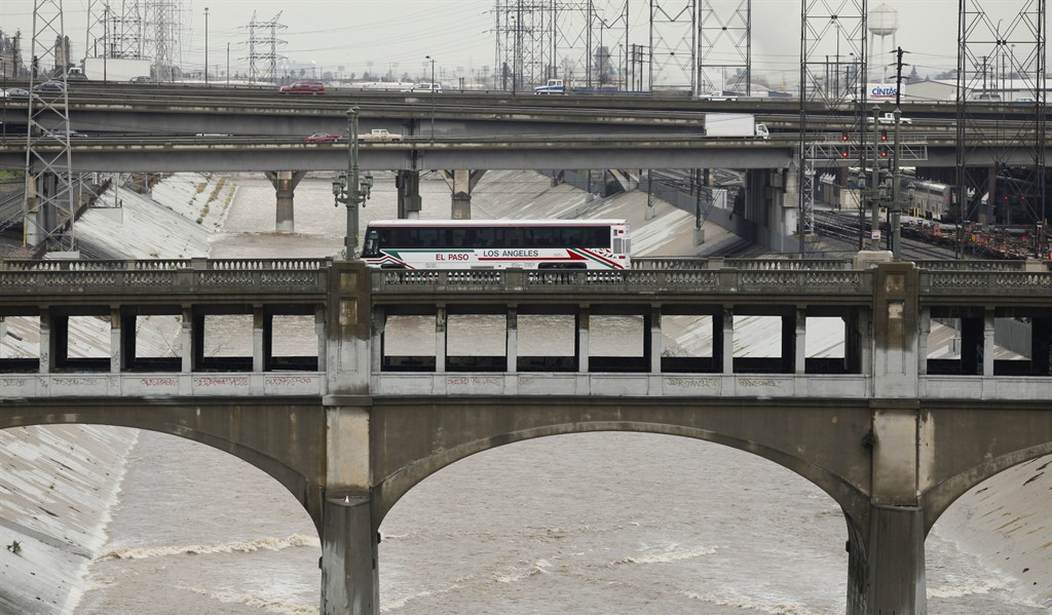California has been pounded with rain for a couple of weeks now. While this created serious flooding in parts of the state and led to more than a dozen deaths, it also solved the worst of the state’s drought problem for the time being.
The latest update from the U.S. Drought Monitor showed an extraordinary sight: Deep splotches of dark red and purple signifying the worst levels of drought have been erased from California’s map almost completely.
On Thursday, 0% of the state was in exceptional drought, and only a tiny portion of far Northern California, 0.32%, was in extreme drought.
It’s the first time that’s happened since April 4, 2020…
Just one month ago, 7% of California was in exceptional drought and 36% in extreme drought, the monitor shows.
So that’s good news because here in California drought leads inevitably to wildfires which thrive on high winds and dried out brush. Those fires can be very deadly so this is good news for the near term.
The longer term situation is still up in the air. In the midst of this “atmospheric river” that has been pouring billions of gallons of water onto the state it seems somewhat foolish that a majority of that water still drains directly into the ocean because California doesn’t have any system in place to store most of it.
After a series of downpours over the past week dumped up to nine inches of rain on the San Gabriel Mountains, some 8.4 billion gallons were impounded behind 14 large dams, easing floods and building up valuable stores of water for the drier summer months ahead.
But in a state that is weathering a crippling, multiyear drought, much larger streams of water — estimated at tens of billions of gallons — have been rushing in recent days straight into the Pacific Ocean, a devastating conundrum for a state whose future depends on holding on to any drop it can.
The LA River, which is a dry concrete box most of the time was flooded during the recent rains.
The LA river is an absolute torrent right now pic.twitter.com/wp0mtptJo6
— Jeremy Lindenfeld (@jeremotographs) January 10, 2023
All of that water, an estimate 18 billion gallons from that single storm, went straight into the ocean. So LA County has a plan to try to capture some of that water before it goes into the river.
Now, the county is embarking on a radical and risky experiment to see if it can increase supply in a different way: a $300 million-per-year program that would build hundreds of small water capture projects over the next 30 to 50 years that could eventually retain as much water as the mountain dams.
“It is audacious what we are proposing, and it’s gigantic,” said Mark Pestrella, executive director of Los Angeles County Public Works…
The new water capture effort in Los Angeles County was prompted not just by water shortages but by a series of environmental lawsuits that sought to stop pollution of the coast with contaminated runoff — the aim of the new system would be not only capturing runoff but cleaning it.
The project is called the Safe Clean Water Program and it was created in 2018 by a ballot initiative called Measure W. Measure W imposed a tax on homes and buildings which has collected about $1 billion so far. About $400 million has been spent on various projects designed to collect water in a given area. The success of the overall project remains to be seen but one professor quoted in the story seemed skeptical.
“It would not be surprising if they get less water than they hope,” said Mr. Lund, the water expert at U.C. Davis. “There are lots of ways for things to go wrong and when there are lots of ways to go wrong, some of them will.”..
One concern among engineers involves maintenance of hundreds of cisterns, dry wells and other features, many of which have filters and permeable bottoms that can get clogged over time.
Water infrastructure has high maintenance costs, and nearly all of Measure W’s tax revenue could be consumed by upkeep at some point in the future, some analysts say.
Many of the Times’ readers don’t seem impressed with the plan. There are of course comments like this which don’t strike me as helpful.
It’s important to remember that millions of people shouldn’t be living here. Droughts and floods are man-made concepts about how nature should behave.
Yes, we get it, the author of this comment would prefer none of us were here and yet I’ll bet won’t be leaving (he’s from LA) anytime soon. As for the droughts and floods, they may be manmade concepts but the point is we have the ability to create infrastructure to manage these problems so that’s what we ought to be doing rather than whining that too many people live here.








Join the conversation as a VIP Member